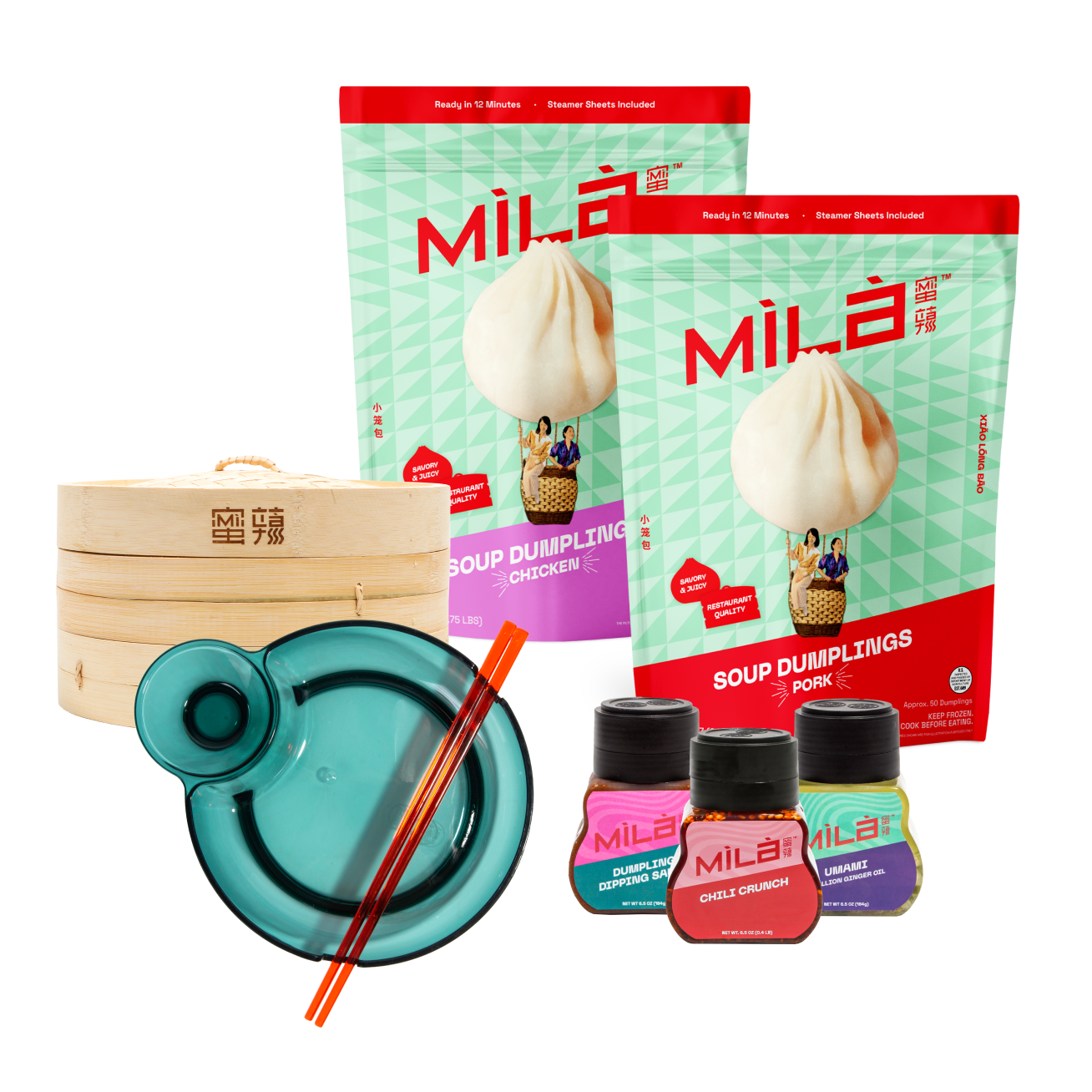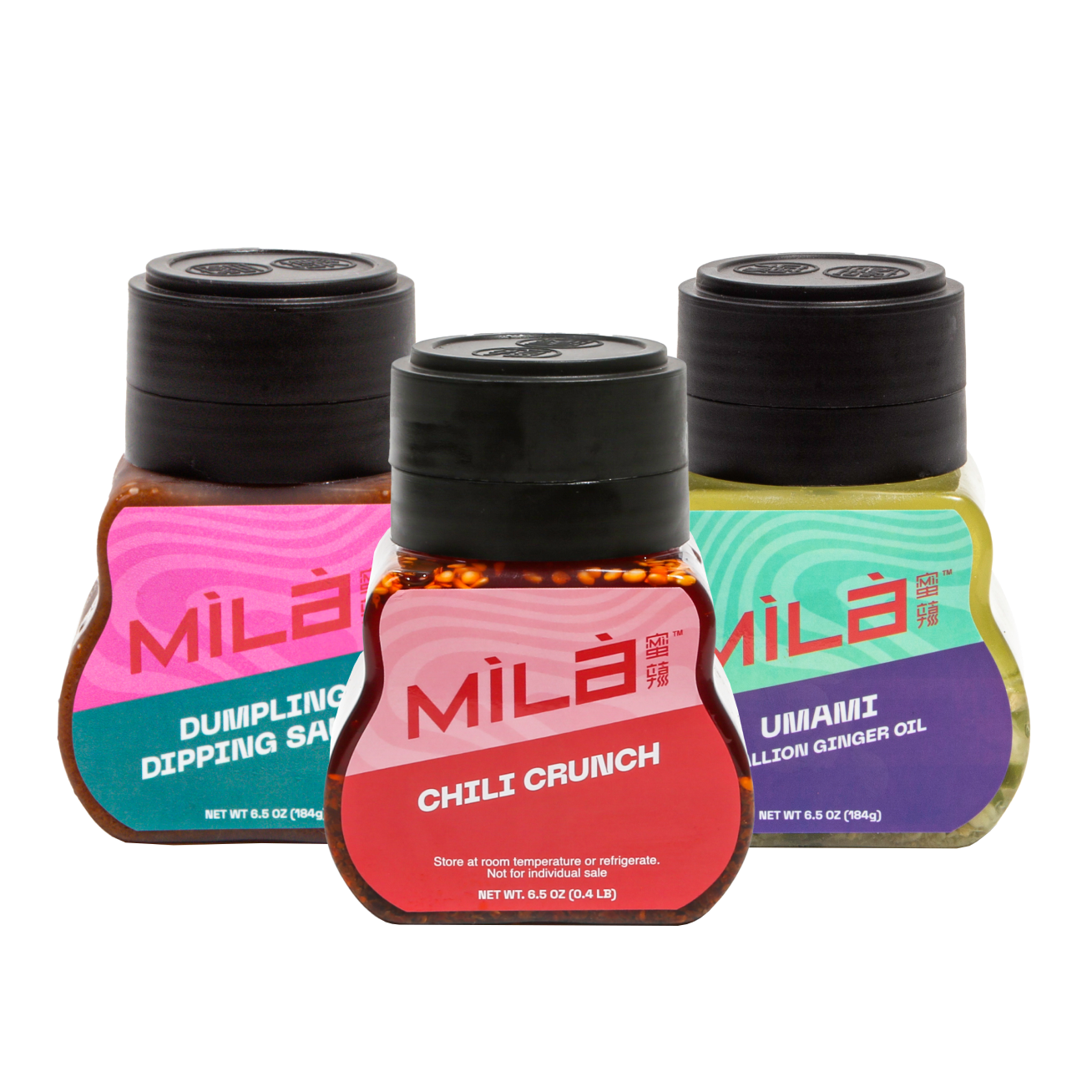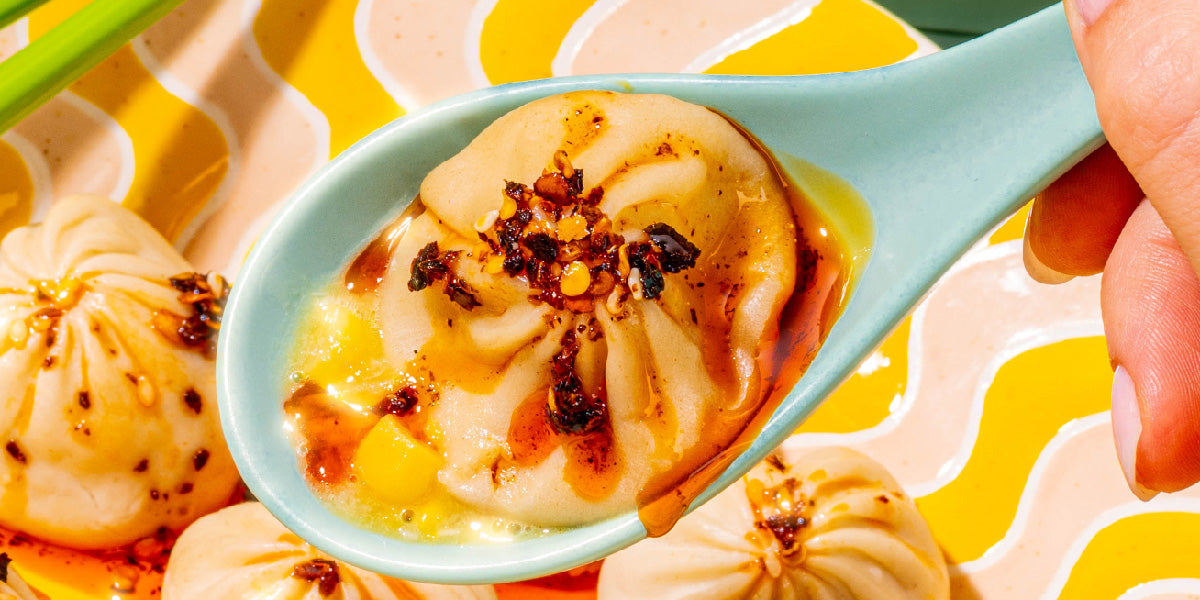Soup Dumplings vs. Potstickers: What’s the Difference?
You might have seen potstickers and soup dumplings on the same menu and wondered to yourself, what’s the difference between the two? We’re here to clear up the confusion so you always know what you’re about to get when a bag of our frozen soup dumplings arrives at your door.
Let’s compare soup dumplings vs. potstickers head to head, including what they are, how people prepare them, and the fillings inside them.
The Basic Differences
What Are Soup Dumplings?
Aside from being one of our favorite things of all time, soup dumplings or Xiao Long Bao (小笼包) are a unique type of Chinese dumplings that’s been showing up more and more at dumpling shops and dim sum restaurants. In most cases, they’re circular and are wrapped closed at the top to keep the soup from spilling out before you can eat them. They also originated in Shanghai and have since become an iconic dish that took the world by storm within the last few decades.
Xiao Long Bao usually have a rich, umami broth in the center, along with a ball of meat that adds to the savory, juicy flavor explosion. The only thing holding back all this flavor power is a delicately thin dumpling wrapper, so it’s important to use a spoon or dipping bowl so you don’t lose any of that liquid gold.
What Are Potstickers?
Potstickers, or guo tie (锅贴), are the crescent-shaped types of Chinese dumplings that you’ll find in the “Appetizers” section on most restaurant menus. Like a lot of other dumplings and baozi varieties, they originated in northern China before spreading to other parts of the country over the centuries.
Potstickers are usually pan-fried and then steamed for a texture that’s crusty on one side and soft on the other—like that friend you had in college who insisted they were hardcore but was still the person everyone came to vent to after a breakup.
However, some chefs and content creators will use a slurry of water and cornstarch to add a crunchy “skirt” to the bottom of the dumplings, but this is totally optional.
The Fillings Within
What Goes into Soup Dumplings?
The fillings inside typical soup dumplings include pork, chicken, or combinations of pork and shrimp with a savory, gelatin-based broth. The broth is an absolute must—after all, they’re supposed to be dumplings filled with soup!
However, we’re always innovating and collaborating with our fellow foodies, so we’ve also come up with limited-time runs of flavors like Pho Beef or Hong Kong Creamy Corn soup dumplings as a new twist on the classics. Almost anything else can go inside the dumpling, as long as there’s enough soup to make each bite juicier than the last.
What Are Potstickers Made Of?
The most common type of potsticker filling is a blend of ground pork and napa cabbage. However, that’s just a baseline. Some people add garlic, Chinese chives, bamboo shoots, mushrooms, or glass noodles into the mix as fillers to elevate the flavor and texture of the pork filling and give it more variety.
Much like soup dumplings, potstickers can have a huge variety of fillings inside—ground beef and ground chicken are common alternatives, and you’ll often see frozen varieties mixed with shrimp in the aisles of Chinese grocery stores.
The key difference here is that potstickers never have broth inside, while soup dumplings should ideally have loads of it.
Differences in Preparation
Whether you’re comparing soup dumplings vs. steamed dumplings or pan-fried potstickers, there are some differences in the most standard ways to cook these two styles of dumplings.
Steaming or Pan-Frying Potstickers
Technically, the most standard way to prepare potstickers is with both pan-frying AND steaming. However, you can also go off the beaten path by separating the two methods or trying a few others:
Preparing Soup Dumplings
Soup dumplings have a soup-er simple set of cooking instructions: You just need a steamer basket, a pan with boiling water, and some steamer liners. Steaming soup dumplings is the classic way to prepare them in most cases—that way, they’re ready in minutes and you know the gelatinous mixture inside has turned to soup.
On the other hand, steaming isn’t the only way to prepare soup dumplings, either. Some people pan-fry them and serve them up with spicy peanut sauce and a perfectly crispy bottom, while others use a pressure cooker or Instant Pot to whip them up in a matter of minutes.
The Occasion
Potstickers as Dim Sum, Appetizers, and More
There’s a reason why so many Chinese restaurant menus include potstickers near the very top—they’re perfect as appetizers, standalone meals, a cap to your late-night antics, or anything in between.
You’ll also find them on most dim sum menus as a standard option, next to other dumpling varieties like har gow, shumai, and other staples.
Dim Sum with Soup Dumplings
It wouldn’t be fair of us to compare dim sum vs. soup dumplings, especially since most people eat soup dumplings as a type of dim sum. Whether you’re going for dim sum with a group of friends or taking your parents out on the town for brunch when they come to visit, you’ll likely have a few (or a few dozen) soup dumplings as part of the experience—alongside rice rolls, smashed cucumber salad, fried shrimp balls, and enough egg custard tarts to feed an army.
In other words, not all dim sum are soup dumplings, but all soup dumplings are dim sum.
Taste the Difference for Yourself





